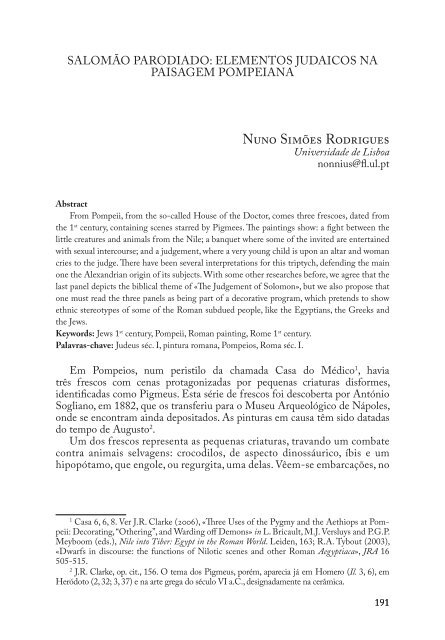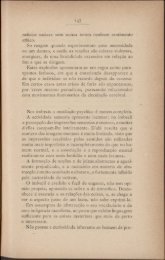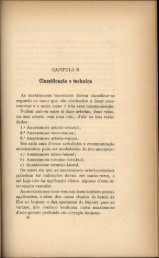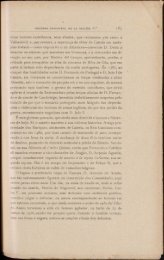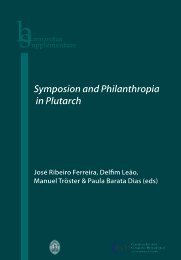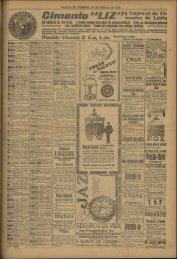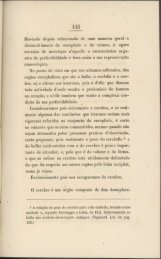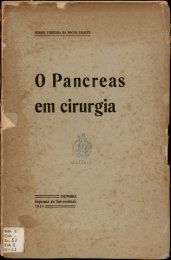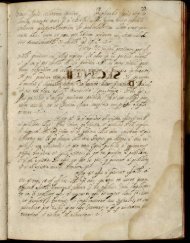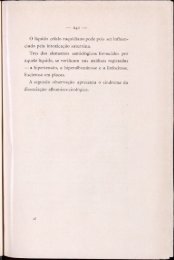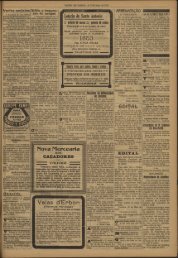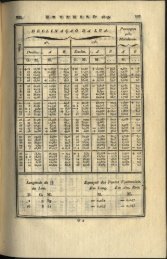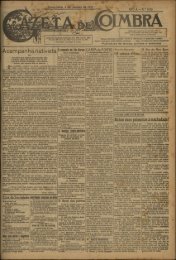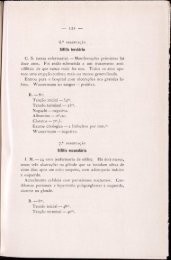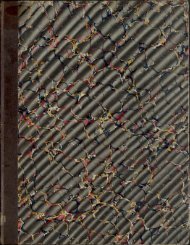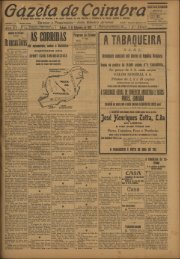Espaços e Paisagens. Vol. 1 - Universidade de Coimbra
Espaços e Paisagens. Vol. 1 - Universidade de Coimbra
Espaços e Paisagens. Vol. 1 - Universidade de Coimbra
Create successful ePaper yourself
Turn your PDF publications into a flip-book with our unique Google optimized e-Paper software.
SALOMãO PARODIADO: ELEMENTOS JUDAICOS NA<br />
PAISAGEM POMPEIANA<br />
Nuno Simões Rodrigues<br />
universida<strong>de</strong> <strong>de</strong> Lisboa<br />
nonnius@fl.ul.pt<br />
Abstract<br />
From Pompeii, from the so-called House of the Doctor, comes three frescoes, dated from<br />
the 1 st century, containing scenes starred by Pigmees. The paintings show: a fight between the<br />
little creatures and animals from the Nile; a banquet where some of the invited are entertained<br />
with sexual intercourse; and a judgement, where a very young child is upon an altar and woman<br />
cries to the judge. There have been several interpretations for this triptych, <strong>de</strong>fending the main<br />
one the Alexandrian origin of its subjects. With some other researches before, we agree that the<br />
last panel <strong>de</strong>picts the biblical theme of «The Judgement of Solomon», but we also propose that<br />
one must read the three panels as being part of a <strong>de</strong>corative program, which pretends to show<br />
ethnic stereotypes of some of the Roman subdued people, like the Egyptians, the Greeks and<br />
the Jews.<br />
Keywords: Jews 1 st century, Pompeii, Roman painting, Rome 1 st century.<br />
Palavras-chave: Ju<strong>de</strong>us séc. I, pintura romana, Pompeios, Roma séc. I.<br />
Em Pompeios, num peristilo da chamada Casa do Médico 1 , havia<br />
três frescos com cenas protagonizadas por pequenas criaturas disformes,<br />
i<strong>de</strong>ntificadas como Pigmeus. Esta série <strong>de</strong> frescos foi <strong>de</strong>scoberta por António<br />
Sogliano, em 1882, que os transferiu para o Museu Arqueológico <strong>de</strong> Nápoles,<br />
on<strong>de</strong> se encontram ainda <strong>de</strong>positados. As pinturas em causa têm sido datadas<br />
do tempo <strong>de</strong> Augusto 2 .<br />
Um dos frescos representa as pequenas criaturas, travando um combate<br />
contra animais selvagens: crocodilos, <strong>de</strong> aspecto dinossáurico, íbis e um<br />
hipopótamo, que engole, ou regurgita, uma <strong>de</strong>las. Vêem-se embarcações, no<br />
1 Casa 6, 6, 8. Ver J.R. Clarke (2006), «Three Uses of the Pygmy and the Aethiops at Pompeii:<br />
Decorating, “Othering”, and Warding off Demons» in L. Bricault, M.J. Versluys and P.G.P.<br />
Meyboom (eds.), Nile into Tiber: Egypt in the Roman World. Lei<strong>de</strong>n, 163; R.A. Tybout (2003),<br />
«Dwarfs in discourse: the functions of Nilotic scenes and other Roman Aegyptiaca», JRA 16<br />
505-515.<br />
2 J.R. Clarke, op. cit., 156. O tema dos Pigmeus, porém, aparecia já em Homero (il. 3, 6), em<br />
Heródoto (2, 32; 3, 37) e na arte grega do século VI a.C., <strong>de</strong>signadamente na cerâmica.<br />
191


